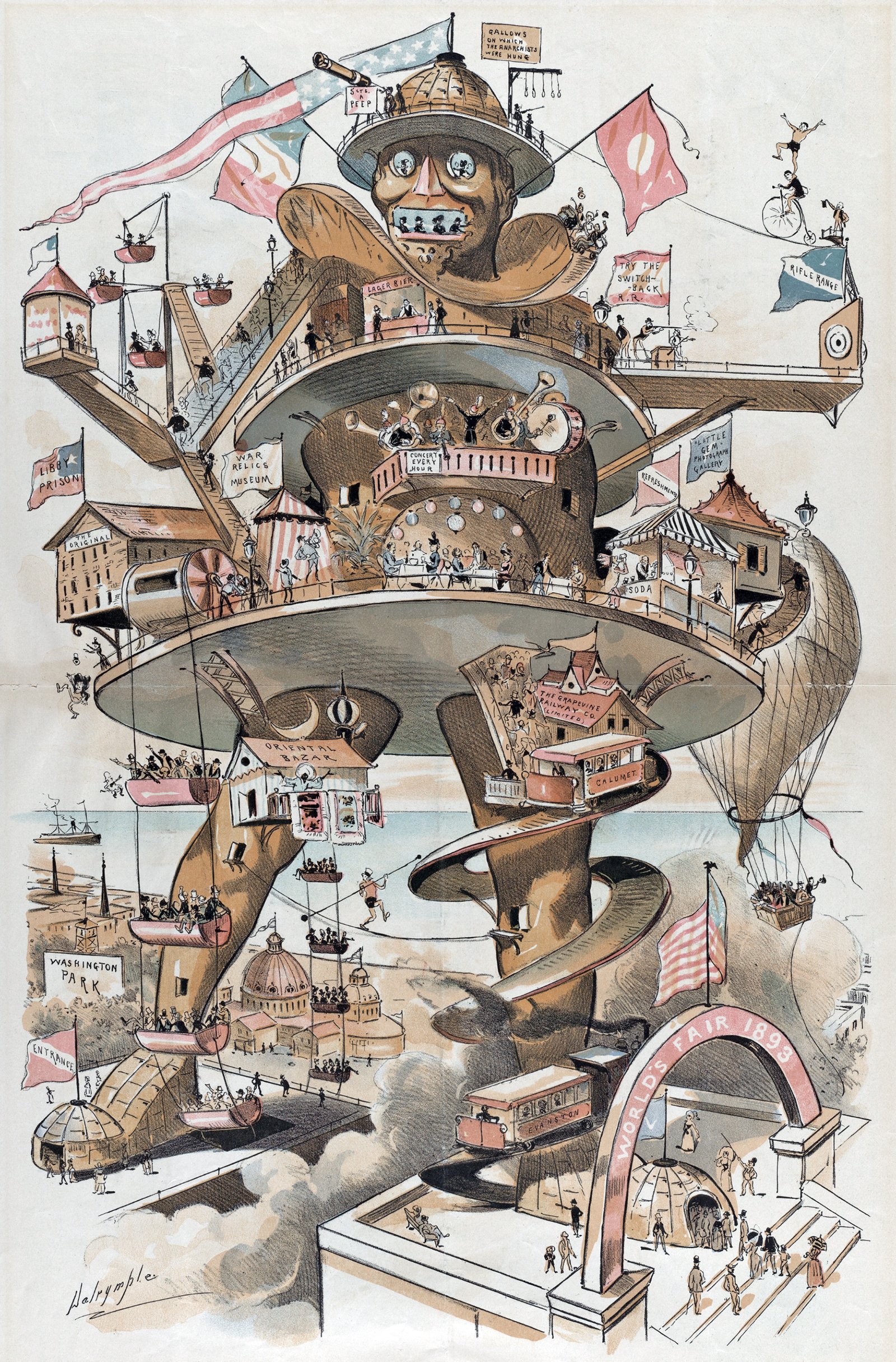The Colossus of Chicago
The caption for the illustration shown above reads: Puck’s suggestion for the World’s Fair - the “Colossus of Chicago” would knock out the Eiffel Tower. It was drawn by Louis Dalrymple for the 8 October 1890 issue of Puck magazine, a popular humor and satire publication. With Colossus, Dalrymple was mocking a series of proposals leading up to the 1893 World’s Fair that sought to out-do the Eiffel Tower from the previous World’s Fair in Paris. Eiffel had become so popular that the organizers of the 1893 World’s Fair wanted to re-create its success in Chicago.
The illustration plays on the city-within-a-tower paradigm. I’m reminded of the What We Are Coming To piece from Judge magazine from a few years later. Both pieces are mocking the idea of a tower or structure containing myriad programs and uses. The Colossus appears to contain an entire fairground within itself, complete with multiple ferris wheels and an observation deck charging 5 cents a peep. There are bands playing, trains whistling, and high-wire acrobats performing. Among the built programs, there’s an oriental bazar, a gallows to hang anarchists, a rifle range, and a museum of war relics, to name a few. All this combines into a structure that would knock out the status of the Eiffel Tower as the world’s tallest structure.
What’s unique about Colossus is the historical tie-in with the Colossus of Rhodes, which was the tallest structure in the ancient world, built by the Ancient Greeks to symbolize the power of the Greek State.[1] It was a statue of the Greek god Rhodes, similar in size to the Statue of Liberty. The Ancient Greeks were using verticality to assert themselves to the world, which parallels the Colossus of Chicago perfectly. The content is pure satire, of course, but that was the point.
Check out other posts about the World’s Fair here.
[1]: To see how the Colossus of Rhodes ties in to the Theory of Verticality, check out Verticality, Part VII: Heavens on Earth.

